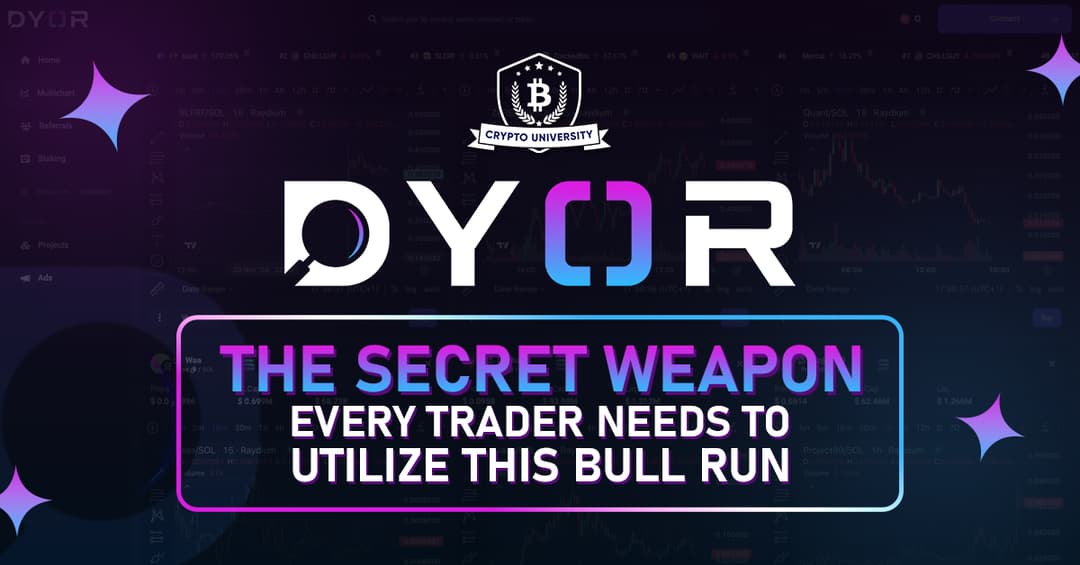No Adverts are available No Adverts are available
No Adverts are available
Cryptocurrency Classes For Beginners - How To Invest In Crypto In 2023
Sajal Sharma • 21 January 2023
 No Adverts are available
No Adverts are availableThe cryptocurrency market has been attracting the interest of several investors lately due to the testimonies of financial transformation from active crypto enthusiasts. Traditional investors are now curious about getting into the game to start enjoying the benefits of investing in cryptocurrency. Some are already taking cryptocurrency classes for beginners to get started on the right track.
If you’re new to the world of crypto, knowing how to buy Bitcoin, Dogecoin, Ethereum, and other cryptocurrencies at first can be confusing. Fortunately, this cryptocurrency class will simplify the process for you.
You'll learn about cryptocurrencies as an asset, the different types of crypto, what to think about before investing, how to invest in crypto profitably, and other information to help you decide if it has a place in your portfolio.
What is in this guide?
- What is cryptocurrency?
- How does cryptocurrency work?
- What to consider before investing in cryptocurrency
- How to invest in cryptocurrency
- Frequently Asked Questions On How to Invest in Cryptocurrency
What is cryptocurrency?
Cryptocurrency is a virtual currency that’s held and distributed online. It's a digital asset like stocks and bonds, that has the potential to increase in value or decrease in value.
Cryptocurrency consists of a virtual "coin," "token," or "unit," unlike traditional currency, which consists of paper banknotes and real coins. You can buy a coin, token, or unit from any cryptocurrency exchange, and you can trade, buy, or sell with other cryptocurrency owners—much like stock trading.
What makes cryptocurrency different from your local currency (apart from the absence of real cash), is that it is "decentralized." The currency is not controlled by a single entity or a central authority. For instance, the Federal Reserve controls the US dollar, which has an impact on the U S economy's overall money supply as well as prices, interest rates, and other financial variables. There is no such control by anyone over cryptocurrencies.
However, a cryptocurrency is generally maintained by a “system.” known as a blockchain network. It tracks all the units of cryptocurrency and their owners. The system will also determine when new crypto units can be created. All right, so that might sound a little bit like the Federal Reserve. But cryptocurrency networks have no central bank, location, or server where users' currencies are stored. Users store their currencies themselves.
The world's largest and most widely used cryptocurrency is Bitcoin. Any cryptocurrency that is not Bitcoin is referred to as an "altcoin" by certain financial experts. That is evidence of Bitcoin's dominance.
How does cryptocurrency work?
All crypto transactions are recorded in a distributed public database known as a blockchain, which prevents people from spending the same coin twice.
Units of a cryptocurrency like Bitcoin are created through a process called mining, which involves using computer power to solve complicated mathematical problems that generate coins. Cryptocurrencies are bought from crypto exchanges and are stored and spent using cryptographic wallets.
Although Bitcoin has been present since 2009, cryptocurrencies and blockchain applications are still in their early stages of development, and more use cases are anticipated in the future. In fact, some financial transactions involving bonds, stocks, and other financial assets are already being conducted via blockchain technology.
In addition to Bitcoin, the top 7 cryptocurrencies by market capitalization as of January 17th, 2023 are Ethereum ( ETH), USDT, Binance coin (BNB), USDC, Ripple (XRP), BUSD, and Cardano (ADA).
What to consider before investing in cryptocurrency
- Get educated
You may think of cryptocurrency as a single asset, similar to a stock or a bond when you hear about individuals buying it. Not really. "Crypto" refers to a broad range of digital currencies with various goals, like bitcoin, Ethereum, and more than 19,000 more—many of which are highly speculative and unlikely to last.
You can take cryptocurrency courses to learn about the ins and outs of this rapidly expanding sector before you dive in. For instance, you ought to be able to explain to friends and family the advantages of blockchain technology and decentralization. You should understand the significance of ideas like cryptographic hashes and mining if you're interested in buying bitcoin. This Detailed cryptocurrency class for beginners can help you get started if you want to learn all you need to know about investing in crypto.
- Prepare for volatility
There is no way around it: At the moment, cryptocurrency prices fluctuate wildly. Before entering the market, you should ask yourself if you are comfortable with the volatility of cryptos.
Take bitcoin as an example, which is the oldest and most valuable cryptocurrency. The price of bitcoin frequently fluctuates by two digits, sometimes even within the same week, going through rallies and crashes. At the height of the coronavirus pandemic in March 2020, if you had purchased one bitcoin for $7,000; by November 2021, it would have increased to $69,000, a gain of more than 850%. On the other hand, by June 2022, it would have fallen to $17,500, a price reduction of more than 70% from its November highs.
Those that entered the cryptocurrency market in 2020 or earlier with a buy-and-hold strategy may still have gains despite the bear market of 2022.
3. Manage risks
It's best to adopt a protective mindset due to the uncertainty and volatility of the cryptocurrency market. Even if there may be many upsides, keep in mind that the downsides might also come quickly and sharply. Be aware that compared to many other investments, most cryptocurrencies may have a larger possibility of dropping to zero. As a result, you might want to invest only what you can afford to lose.
4. Know the best option to secure your crypto
Keeping your cryptocurrency safe is one of the most crucial steps to take after buying it. If you're a new crypto investor, keeping your financial assets with a reputable custody provider with strong and audited security standards may be the easiest option for you. These platforms typically offer security procedures that may be more suitable for newbies.
On the other side, if you want advanced security for your assets, you can decide to secure them yourself through the use of self-custody cold wallets like Ledger and Trezor.
5. Consider crypto taxes
Currently, cryptocurrencies are taxed similarly to stocks in some countries/ regions. When assets are sold for a profit, capital gains tax is charged; but, when they are sold for a loss, you may be eligible for a tax reduction. Because the crypto industry is still new, tax laws are subject to quick changes. To make sure your filings are accurate, you might want to reach out to a tax expert.
How to invest in cryptocurrency in 2023
Step 1: Select a cryptocurrency exchange
Your first step when investing in crypto is to choose a reliable cryptocurrency exchange. An exchange is where you’ll be buying, selling, and, likely, storing your crypto (if you're a complete beginner).
Luckily, most top crypto exchanges have become quite user-friendly and replicable over the years. The best 5 exchanges for beginners are Binance, Kucoin, OKX, Gate.io, and Coinbase.
Step 2: Choose Which Cryptos You’d Like to Invest In
Bitcoin isn’t the only digital currency to buy and invest in. There are over 19,000 cryptos in existence. However, most exchanges only offer less than 1000 for trading.
Before you invest in a coin, you should do your research to buy the right crypto. Check the crypto project’s website and social media channels to also get a sense of how socially active the project is and gain greater insight into the project, the team, and its community. Consider the credibility and experience of the team members, read the white paper and roadmap of the project, and check out the major investors of the project.
Step 3: Determine How Much Crypto to Buy
Now that you've carefully selected a coin to invest in, how much of that crypto should you buy from your net worth? Your best bet is to start small. Start with 10%, or better yet 5%, of your portfolio. As your confidence in the markets and your risk appetite grows, you can invest more.
Step 4: Safely Store Your Crypto assets in a Wallet
Once you buy some crypto and you decide to hold them for a long time, your next step is to store your crypto in a hot or cold wallet, depending on your level of crypto knowledge.
A hot wallet lets you access and trade your crypto with ease, and security measures protecting them are constantly upgraded.
However, hackers are getting smarter which is why some crypto traders, and especially long-term holders, choose to save their crypto and private keys in a cold wallet — a USB or hard drive that they keep offline.
On the other hand, If you’re investing in crypto with small amounts, and think you’ll keep buying regularly, a hot wallet will do for now. If you are unsure of what suits you, you can learn more about crypto wallets here.
Step 5: Manage your investments
Your final step to investing in crypto the right way is by keeping an eye on your investment regularly. You can do this by adding your crypto to your main investment app/ software dashboard so you can monitor its performance over time. You can also try a crypto website with a portfolio tracking feature like Coingecko.
Since the crypto space is highly volatile, check for crypto-related news and trends regularly to monitor regulatory scrutiny of your chosen crypto, exchange, or wallet, to avoid being a victim of another FTX collapse.
FAQs on cryptocurrency classes for beginners
What is the minimum to invest in cryptocurrency?
There is no set minimum amount required to invest in cryptocurrencies, Rather, you should only consider investing only an amount that you can afford to lose.
The cost of investing in cryptocurrencies is generally quite low. For instance, most major cryptocurrency exchanges have a minimum trade amount of $5 or $10. There may be even lower minimums for other cryptocurrency trading applications.
Which cryptocurrency is best for beginners?
The best cryptocurrency for beginners is bitcoin. This is because Bitcoin is a popular cryptocurrency that is trusted by major financial institutions and governments more than other cryptos. Apart from that, Bitcoin is widely traded in any cryptocurrency exchange. Bitcoin also has a competitive advantage because you can either trade it as an asset or choose to hold it as a store of value or wealth.
Can You Make Money With Cryptocurrency?
Yes, you can make money with cryptocurrency. Due to the obvious volatile nature of digital currencies, most of them carry a significant level of risk, while some require specific knowledge or skill. One method of earning money with cryptocurrencies is through trading them.
Ready to start learning how to invest in Bitcoin & other crypto assets? Check out this valuable crypto community for beginners from crypto university to get started.
Video tutorial
Here is a helpful video guide by Crypto University – your Crypto trading advisor that shows you how to start investing in Crypto the right way as well. Find more free investing courses on Youtube:
Share Posts
Copy Link
cryptouniversity.networkblog/crypto...

Ambrose Okolo • 30 May 2025
VeChain’s StarGate Staking Program: Unlocking Rewards by July 1, 2025
VeChain’s StarGate Staking Program launches July 1, 2025, offering massive VTHO rewards and lower staking barriers. It’s your chance to earn, support decentralization, and join blockchain’s next big leap.

Isaac Bandie • 26 May 2025
VeBetterDAO: The Future of Blockchain-Driven Sustainability
Small actions. Big impact. With VeBetterDAO, every eco-friendly choice earns you rewards. Join the movement that turns good habits into blockchain-powered incentives. vebetter.com
